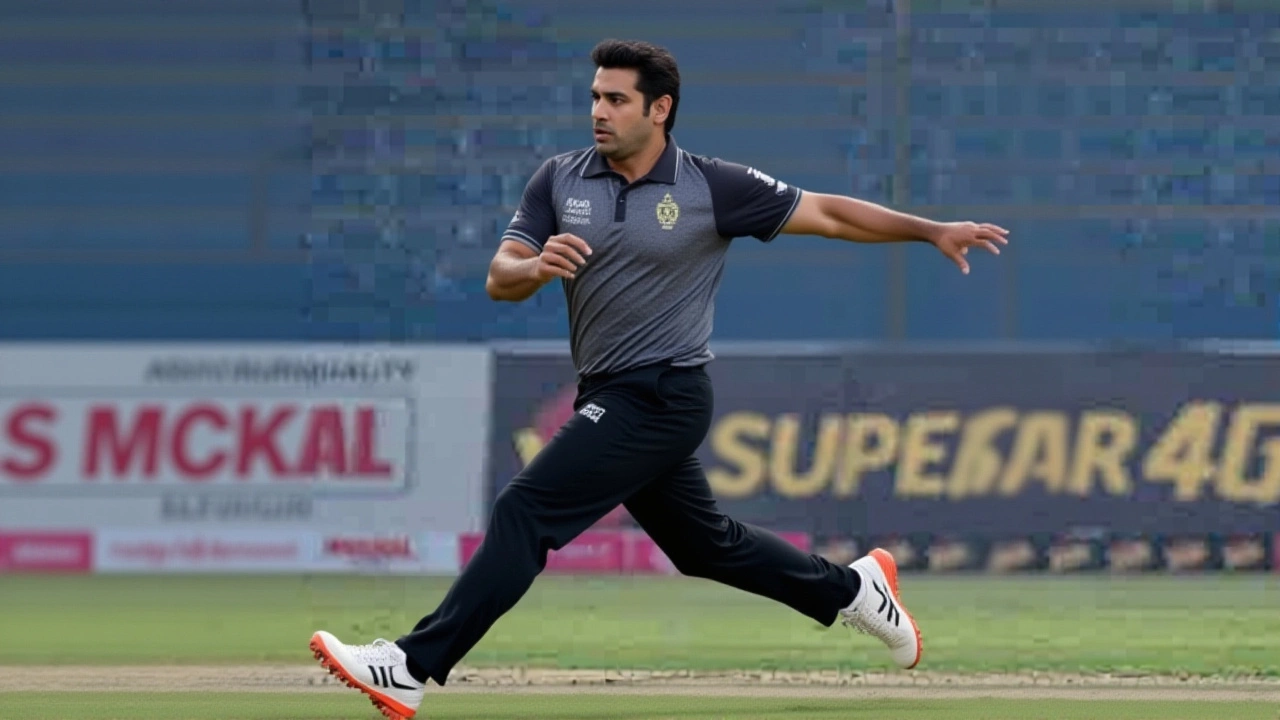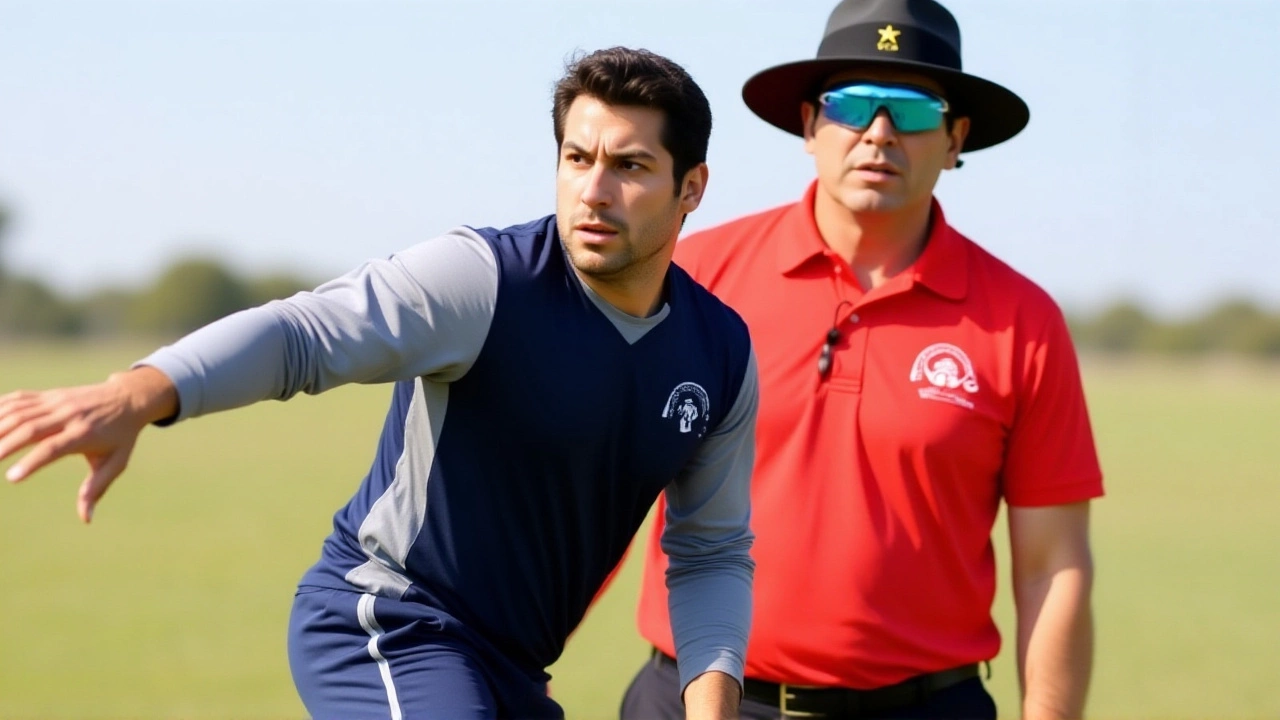
When Asif Khan Afridi, a 38‑year‑old left‑arm orthodox spinner, stepped onto the North Stand at Rawalpindi Cricket Stadium on 20 October 2025, the cricket world collectively held its breath. The match was the second Test of Pakistan’s home series against the South Africa national cricket team, and Afridi’s appearance marked the first time in nearly three decades that a player of his age was handed a Test cap by the Pakistan Cricket Board. His debut didn’t just add a name to the scorecard; it rewrote a narrative about perseverance, domestic pathways, and redemption.
From Domestic Stalwart to International Dream
Born on 25 December 1986 in the rugged hills of Khyber Pakhtunkhwa, Afridi began his first‑class career with the Federally Administered Tribal Areas (FATA) side in the Quaid‑e‑Azam Trophy. He burst onto the domestic scene in the 2017‑18 season, scraping 30 wickets in seven matches, and repeated the feat the very next year. Those numbers earned him a spot in Khyber Pakhtunkhwa’s squad for the 2020‑21 Pakistan Cup, where a five‑wicket haul in the final clinched him both player‑of‑the‑match and bowler‑of‑the‑tournament honors.
Despite these achievements, Afridi’s path wasn’t a straight line. In September 2022 the board imposed a two‑year ban for an alleged breach of the anti‑corruption code. The sanction lifted in September 2024, just in time for him to sign with the Lahore Qalandars for the 2025 Pakistan Super League (PSL). Over nine matches, he collected exactly seven wickets at an average of 24.71, a performance highlighted by Wisden as a catalyst for his national call‑up.
Performance that Turned Heads
The numbers from PSL 2025 are modest compared with the league’s usual star turnarounds, but they tell a larger story. Afridi bowled a tidy 15 overs in the Lahore Qalandars’ opening win, extracting two crucial middle‑order wickets that broke a partnership at 112‑4. In the next game, he delivered a spell of 3‑31 that forced Australia‑style aggression to crumble. Those spells, combined with a disciplined economy of 4.4 runs per over, convinced selectors that experience and accuracy could bolster Pakistan’s spin attack, especially on sub‑continental pitches that favour turn.
“He’s the kind of player you keep in the locker room for his attitude,” said Qalandars’ head coach Aaqib Javed. “Age is just a number for someone who still wants to learn and improve.” The sentiment resonated across the cricketing community, where stories of late‑blooming talent often become folklore.
The Historic Debut at Rawalpindi
With the Test series already level at 0‑0, Pakistan’s captain, Babar Azam, handed Afridi the ball in the fourth innings of the second Test. The spinner’s first delivery drifted just enough to tease the edge of South Africa’s opening batsman, resulting in a caught‑behind appeal that was promptly turned down. Still, the second ball produced a clean leg‑break, rattling the bat and coaxing a mis‑stroke that led to a low‑catch at mid‑wicket. That wicket made Afridi the third‑oldest Pakistani Test debutant, trailing only Miran Bakhsh (47 years, 1955) and Amir Elahi (44 years, 1952).
He finished the innings with figures of 2‑58 from 18 overs, earning applause not just for the wickets but for the composure he displayed under immense pressure. The stadium’s roar was punctuated by a standing ovation as he collected his cap, a moment captured by broadcasters worldwide and replayed across social‑media feeds.
Reactions from the Cricket Community
Former Pakistan spinner Saqlain Mushtaq called the debut “a masterclass in patience and perseverance.” In a post‑match interview, PCB Chairman Ramiz Raja praised the selection policy, noting that “our domestic structure should reward consistency, no matter the age.” Meanwhile, South Africa’s captain, Aiden Markram, admitted he “didn’t anticipate such swing from a newcomer, and it disrupted our plans for the final session.”
Fans flooded Twitter with #AfridiDebut, sharing anecdotes of watching his early matches in the tribal leagues. One long‑time supporter from Peshawar wrote, “I’ve seen Asif spin on dusty pitches when we were kids. Seeing him bowl at Rawalpindi feels like a dream finally realised.” Even critics, who previously argued that younger talent should be prioritized, softened their stance, acknowledging that experience can be a strategic asset in the long format.

What This Means for Pakistani Cricket
The episode underscores a shifting mindset within the Pakistan Cricket Board. Historically, the board leaned heavily on youth, often overlooking seasoned players who performed consistently in the domestic circuit. Afridi’s ascent demonstrates that the selection panel is now willing to blend youth with veteran savvy, especially when the latter brings proven performance on home soil.
Strategically, his left‑arm orthodox spin adds variety to a pace‑dominated attack that struggled on turning tracks during the 2023‑24 home season. Analysts predict that Pakistan may now field a more balanced XI in the upcoming series against England, giving Afridi a chance to cement his place.
Looking Ahead
With the series moving to Karachi for the final Test, Afridi is expected to feature in the second innings, where the pitch is likely to deteriorate and favor spin. If he repeats or improves upon his Rawalpindi figures, he could become a regular feature in the Test side for the next few years—a rare prospect for a player approaching 40.
Beyond the field, his story is already inspiring younger cricketers from the former tribal areas, many of whom see Afridi as proof that persistence can break through bureaucratic barriers. In community meetings across Khyber Pakhtunkhwa, coaches now reference his journey when encouraging players who feel they’ve been “overlooked.”
Frequently Asked Questions
How does Afridi’s debut affect younger spin bowlers in Pakistan?
His breakthrough sends a clear signal that strong domestic performances can outweigh age concerns. Young spinners now have a tangible example that the PCB rewards consistency, encouraging them to focus on first‑class tournaments like the Quaid‑e‑Azam Trophy to catch selectors’ eyes.
What were the key statistics that led to his selection?
Afridi took 30 wickets in each of the 2017‑18 and 2018‑19 Quaid‑e‑Azam seasons, earned a five‑wicket haul in the 2020‑21 Pakistan Cup final, and recorded seven wickets at 24.71 in nine PSL 2025 matches. Those figures, coupled with his disciplined economy, convinced selectors he could add depth to the Test spin attack.
Why was Afridi banned in 2022, and how did he return?
The PCB imposed a two‑year ban in September 2022 for alleged violations of the anti‑corruption code. The suspension ended in September 2024, after which Afridi re‑joined domestic cricket, impressed in the 2024‑25 season, and earned a spot with the Lahore Qalandars for PSL 2025, paving the way for his Test call‑up.
What does this debut mean for Pakistan’s upcoming Test series against England?
If Afridi reproduces his Rawalpindi performance, Pakistan will have a reliable left‑arm orthodox option on pitches that favor turn, potentially offsetting England’s seam attack. His experience could also mentor younger bowlers, adding tactical flexibility to the side.